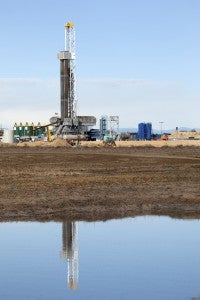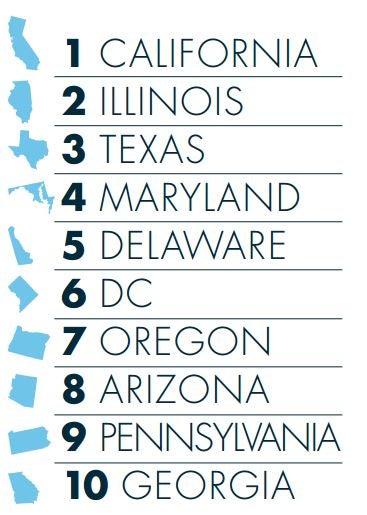 Last week, GridWise Alliance released its 3rd Annual Grid Modernization Index (GMI), a ranking of every state’s progress toward modernization of our nation’s electric system – and Texas impressively placed third. The Alliance, a leading smart grid coalition which includes Environmental Defense Fund, based its assessment on state policies, customer engagement, and investment in advancing grid operations.
Last week, GridWise Alliance released its 3rd Annual Grid Modernization Index (GMI), a ranking of every state’s progress toward modernization of our nation’s electric system – and Texas impressively placed third. The Alliance, a leading smart grid coalition which includes Environmental Defense Fund, based its assessment on state policies, customer engagement, and investment in advancing grid operations.
As we move toward a smarter, more efficient electric system, Texas is emerging as a leader in grid modernization. And with three recent smart-grid grants from the U.S. Department of Energy’s (DOE) SunShot Initiative, the Lone Star State could climb to the top of the GMI list.
Since 2011, the DOE has awarded millions of dollars through the SunShot Initiative to a variety of public and private entities. The goal is to make solar energy cost-competitive with other forms of electricity by the end of the decade, meaning it would cost the same to get your power from solar as from more traditional sources like coal. In the short amount of time since the program began, the solar industry is already 70 percent of the way there.
As the sixth largest electricity consumer in the country, Texas could greatly contribute to reaching this goal, especially with recent DOE support given to projects run by Austin Energy, Pecan Street, and GeoCF: Read More »
 FirstEnergy’s plea to keep four aging power plants alive will cost Ohio customers almost $4 billion, according to a new study out today by the Institute for Energy Economics and Financial Analysis (IEEFA). The proposal is currently in front of the Public Utilities Commission of Ohio (PUCO).
FirstEnergy’s plea to keep four aging power plants alive will cost Ohio customers almost $4 billion, according to a new study out today by the Institute for Energy Economics and Financial Analysis (IEEFA). The proposal is currently in front of the Public Utilities Commission of Ohio (PUCO).









 Ohio utilities FirstEnergy and AEP, as readers of this blog know too well, want the Buckeye State to bail out their uneconomic power plants. Combined, their proposals before the Public Utilities Commission of Ohio (PUCO) would run Ohioans nearly $6 billion in increased costs. We understand where the companies’ greedy desire for subsidies comes from, but the arguments for them have become downright silly.
Ohio utilities FirstEnergy and AEP, as readers of this blog know too well, want the Buckeye State to bail out their uneconomic power plants. Combined, their proposals before the Public Utilities Commission of Ohio (PUCO) would run Ohioans nearly $6 billion in increased costs. We understand where the companies’ greedy desire for subsidies comes from, but the arguments for them have become downright silly. Questions about if and how hydraulic fracturing activities (or “fracking” to some) can contaminate drinking water have been top-of-mind for many since the practice started getting widespread public attention about a decade ago. Recognizing the validity of those concerns, EPA undertook a study to see how the full ‘hydraulic fracturing water cycle’ – which includes water withdrawals, chemical use and mixing, well injection, waste water management and disposal — could potentially impact our drinking water resources. In a
Questions about if and how hydraulic fracturing activities (or “fracking” to some) can contaminate drinking water have been top-of-mind for many since the practice started getting widespread public attention about a decade ago. Recognizing the validity of those concerns, EPA undertook a study to see how the full ‘hydraulic fracturing water cycle’ – which includes water withdrawals, chemical use and mixing, well injection, waste water management and disposal — could potentially impact our drinking water resources. In a  The GridWise Alliance, a leading business forum for the development of a smart, clean, modern electric grid, just released its
The GridWise Alliance, a leading business forum for the development of a smart, clean, modern electric grid, just released its  Last week, GridWise Alliance released its
Last week, GridWise Alliance released its  Each month, the Energy Exchange rounds up a list of top clean energy conferences around the country. Our list includes conferences at which experts from the EDF Clean Energy Program will be speaking, plus additional events that we think our readers may benefit from marking on their calendars.
Each month, the Energy Exchange rounds up a list of top clean energy conferences around the country. Our list includes conferences at which experts from the EDF Clean Energy Program will be speaking, plus additional events that we think our readers may benefit from marking on their calendars.